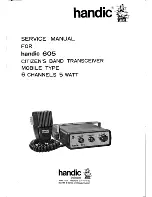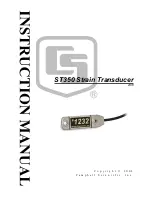
DW1000 User Manual
© Decawave Ltd 2017
Version 2.12
Page 234 of 242
Abbreviation
Full Title
Explanation
LDE
leading edge (or
the process to find
and adjust the RX
message
timestamp)
Process to find and adjust the RX message timestamp
LNA
low noise
amplifier
Circuit normally found at the front-end of a radio receiver designed to
amplify very low level signals while keeping any added noise to as low a
level as possible
LOS
line of sight
Physical radio channel configuration in which there is a direct line of sight
between the transmitter and the receiver
NLOS
non line of sight
Physical radio channel configuration in which there is no direct line of
sight between the transmitter and the receiver
OTP
one-time
programmable
(memory)
Internal memory in DW1000 that can be programmed once to store
various identification and calibration values
PAC
A group of preamble symbols which are correlated together in the
preamble detection process in the receiver. The size of the PAC is
configurable –see
Sub-Register 0x27:08 – DRX_TUNE2
. The selection of the
most appropriate PAC size is discussed in section 4.1.1
PHR
A 19-bit section of the IEEE802.15.4-2011 UWB frame that comes directly
after the SFD and before the message payload and defines various
characteristics of that payload required by the receiver for successful
reception.
PHY
physical layer
Defined in the context of the OSI 7-layer model for communications
systems in general and the IEEE802.15.4-2011 UWB standard in particular,
the PHY layer is the lowest layer in the 7-layermodel and defines the
physical interface to the communications medium
PLL
phase locked loop
Phase locked loop used to generate stable frequency clocks. These are
used in DW1000 to generate carrier frequencies and system clocks.
PRF
pulse repetition
frequency
Defined in the context of the IEEE802.15.4-2011 [1] standard. This is the
frequency at which pulses are repeated in the preamble and data portions
of a frame depending on the chosen configuration.
PSR
preamble symbol
repetitions
Used to define the overall preamble length. A larger number of preamble
symbol repetitions give a longer preamble.
RF
radio frequency
Generally used to refer to signals in the range of 3 kHz to 300 GHz. In the
context of a radio receiver, the term is generally used to refer to circuits in
a receiver before down-conversion takes place and in a transmitter after
up-conversion takes place
RMARKER
ranging marker
(start of PHR at
antenna)
Defined in the context of the IEEE802.15.4-2011 [1] standard. Defines the
start of the PHR at the antenna in either transmit or receive
RTLS
real time location
System intended to provide information on the location of various items in









































